RBS 2012 Annual Report Download - page 510
Download and view the complete annual report
Please find page 510 of the 2012 RBS annual report below. You can navigate through the pages in the report by either clicking on the pages listed below, or by using the keyword search tool below to find specific information within the annual report.-
 1
1 -
 2
2 -
 3
3 -
 4
4 -
 5
5 -
 6
6 -
 7
7 -
 8
8 -
 9
9 -
 10
10 -
 11
11 -
 12
12 -
 13
13 -
 14
14 -
 15
15 -
 16
16 -
 17
17 -
 18
18 -
 19
19 -
 20
20 -
 21
21 -
 22
22 -
 23
23 -
 24
24 -
 25
25 -
 26
26 -
 27
27 -
 28
28 -
 29
29 -
 30
30 -
 31
31 -
 32
32 -
 33
33 -
 34
34 -
 35
35 -
 36
36 -
 37
37 -
 38
38 -
 39
39 -
 40
40 -
 41
41 -
 42
42 -
 43
43 -
 44
44 -
 45
45 -
 46
46 -
 47
47 -
 48
48 -
 49
49 -
 50
50 -
 51
51 -
 52
52 -
 53
53 -
 54
54 -
 55
55 -
 56
56 -
 57
57 -
 58
58 -
 59
59 -
 60
60 -
 61
61 -
 62
62 -
 63
63 -
 64
64 -
 65
65 -
 66
66 -
 67
67 -
 68
68 -
 69
69 -
 70
70 -
 71
71 -
 72
72 -
 73
73 -
 74
74 -
 75
75 -
 76
76 -
 77
77 -
 78
78 -
 79
79 -
 80
80 -
 81
81 -
 82
82 -
 83
83 -
 84
84 -
 85
85 -
 86
86 -
 87
87 -
 88
88 -
 89
89 -
 90
90 -
 91
91 -
 92
92 -
 93
93 -
 94
94 -
 95
95 -
 96
96 -
 97
97 -
 98
98 -
 99
99 -
 100
100 -
 101
101 -
 102
102 -
 103
103 -
 104
104 -
 105
105 -
 106
106 -
 107
107 -
 108
108 -
 109
109 -
 110
110 -
 111
111 -
 112
112 -
 113
113 -
 114
114 -
 115
115 -
 116
116 -
 117
117 -
 118
118 -
 119
119 -
 120
120 -
 121
121 -
 122
122 -
 123
123 -
 124
124 -
 125
125 -
 126
126 -
 127
127 -
 128
128 -
 129
129 -
 130
130 -
 131
131 -
 132
132 -
 133
133 -
 134
134 -
 135
135 -
 136
136 -
 137
137 -
 138
138 -
 139
139 -
 140
140 -
 141
141 -
 142
142 -
 143
143 -
 144
144 -
 145
145 -
 146
146 -
 147
147 -
 148
148 -
 149
149 -
 150
150 -
 151
151 -
 152
152 -
 153
153 -
 154
154 -
 155
155 -
 156
156 -
 157
157 -
 158
158 -
 159
159 -
 160
160 -
 161
161 -
 162
162 -
 163
163 -
 164
164 -
 165
165 -
 166
166 -
 167
167 -
 168
168 -
 169
169 -
 170
170 -
 171
171 -
 172
172 -
 173
173 -
 174
174 -
 175
175 -
 176
176 -
 177
177 -
 178
178 -
 179
179 -
 180
180 -
 181
181 -
 182
182 -
 183
183 -
 184
184 -
 185
185 -
 186
186 -
 187
187 -
 188
188 -
 189
189 -
 190
190 -
 191
191 -
 192
192 -
 193
193 -
 194
194 -
 195
195 -
 196
196 -
 197
197 -
 198
198 -
 199
199 -
 200
200 -
 201
201 -
 202
202 -
 203
203 -
 204
204 -
 205
205 -
 206
206 -
 207
207 -
 208
208 -
 209
209 -
 210
210 -
 211
211 -
 212
212 -
 213
213 -
 214
214 -
 215
215 -
 216
216 -
 217
217 -
 218
218 -
 219
219 -
 220
220 -
 221
221 -
 222
222 -
 223
223 -
 224
224 -
 225
225 -
 226
226 -
 227
227 -
 228
228 -
 229
229 -
 230
230 -
 231
231 -
 232
232 -
 233
233 -
 234
234 -
 235
235 -
 236
236 -
 237
237 -
 238
238 -
 239
239 -
 240
240 -
 241
241 -
 242
242 -
 243
243 -
 244
244 -
 245
245 -
 246
246 -
 247
247 -
 248
248 -
 249
249 -
 250
250 -
 251
251 -
 252
252 -
 253
253 -
 254
254 -
 255
255 -
 256
256 -
 257
257 -
 258
258 -
 259
259 -
 260
260 -
 261
261 -
 262
262 -
 263
263 -
 264
264 -
 265
265 -
 266
266 -
 267
267 -
 268
268 -
 269
269 -
 270
270 -
 271
271 -
 272
272 -
 273
273 -
 274
274 -
 275
275 -
 276
276 -
 277
277 -
 278
278 -
 279
279 -
 280
280 -
 281
281 -
 282
282 -
 283
283 -
 284
284 -
 285
285 -
 286
286 -
 287
287 -
 288
288 -
 289
289 -
 290
290 -
 291
291 -
 292
292 -
 293
293 -
 294
294 -
 295
295 -
 296
296 -
 297
297 -
 298
298 -
 299
299 -
 300
300 -
 301
301 -
 302
302 -
 303
303 -
 304
304 -
 305
305 -
 306
306 -
 307
307 -
 308
308 -
 309
309 -
 310
310 -
 311
311 -
 312
312 -
 313
313 -
 314
314 -
 315
315 -
 316
316 -
 317
317 -
 318
318 -
 319
319 -
 320
320 -
 321
321 -
 322
322 -
 323
323 -
 324
324 -
 325
325 -
 326
326 -
 327
327 -
 328
328 -
 329
329 -
 330
330 -
 331
331 -
 332
332 -
 333
333 -
 334
334 -
 335
335 -
 336
336 -
 337
337 -
 338
338 -
 339
339 -
 340
340 -
 341
341 -
 342
342 -
 343
343 -
 344
344 -
 345
345 -
 346
346 -
 347
347 -
 348
348 -
 349
349 -
 350
350 -
 351
351 -
 352
352 -
 353
353 -
 354
354 -
 355
355 -
 356
356 -
 357
357 -
 358
358 -
 359
359 -
 360
360 -
 361
361 -
 362
362 -
 363
363 -
 364
364 -
 365
365 -
 366
366 -
 367
367 -
 368
368 -
 369
369 -
 370
370 -
 371
371 -
 372
372 -
 373
373 -
 374
374 -
 375
375 -
 376
376 -
 377
377 -
 378
378 -
 379
379 -
 380
380 -
 381
381 -
 382
382 -
 383
383 -
 384
384 -
 385
385 -
 386
386 -
 387
387 -
 388
388 -
 389
389 -
 390
390 -
 391
391 -
 392
392 -
 393
393 -
 394
394 -
 395
395 -
 396
396 -
 397
397 -
 398
398 -
 399
399 -
 400
400 -
 401
401 -
 402
402 -
 403
403 -
 404
404 -
 405
405 -
 406
406 -
 407
407 -
 408
408 -
 409
409 -
 410
410 -
 411
411 -
 412
412 -
 413
413 -
 414
414 -
 415
415 -
 416
416 -
 417
417 -
 418
418 -
 419
419 -
 420
420 -
 421
421 -
 422
422 -
 423
423 -
 424
424 -
 425
425 -
 426
426 -
 427
427 -
 428
428 -
 429
429 -
 430
430 -
 431
431 -
 432
432 -
 433
433 -
 434
434 -
 435
435 -
 436
436 -
 437
437 -
 438
438 -
 439
439 -
 440
440 -
 441
441 -
 442
442 -
 443
443 -
 444
444 -
 445
445 -
 446
446 -
 447
447 -
 448
448 -
 449
449 -
 450
450 -
 451
451 -
 452
452 -
 453
453 -
 454
454 -
 455
455 -
 456
456 -
 457
457 -
 458
458 -
 459
459 -
 460
460 -
 461
461 -
 462
462 -
 463
463 -
 464
464 -
 465
465 -
 466
466 -
 467
467 -
 468
468 -
 469
469 -
 470
470 -
 471
471 -
 472
472 -
 473
473 -
 474
474 -
 475
475 -
 476
476 -
 477
477 -
 478
478 -
 479
479 -
 480
480 -
 481
481 -
 482
482 -
 483
483 -
 484
484 -
 485
485 -
 486
486 -
 487
487 -
 488
488 -
 489
489 -
 490
490 -
 491
491 -
 492
492 -
 493
493 -
 494
494 -
 495
495 -
 496
496 -
 497
497 -
 498
498 -
 499
499 -
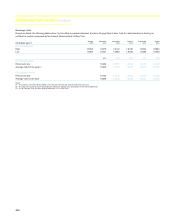 500
500 -
 501
501 -
 502
502 -
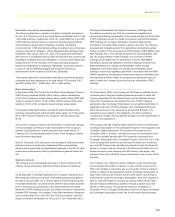 503
503 -
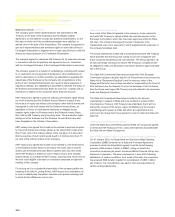 504
504 -
 505
505 -
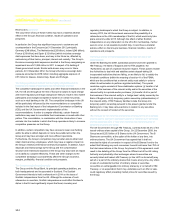 506
506 -
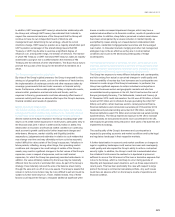 507
507 -
 508
508 -
 509
509 -
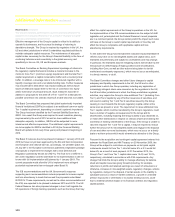 510
510 -
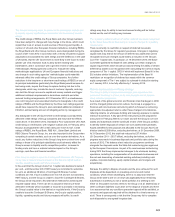 511
511 -
 512
512 -
 513
513 -
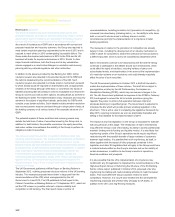 514
514 -
 515
515 -
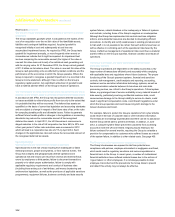 516
516 -
 517
517 -
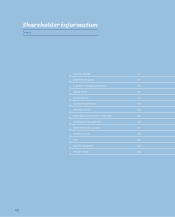 518
518 -
 519
519 -
 520
520 -
 521
521 -
 522
522 -
 523
523 -
 524
524 -
 525
525 -
 526
526 -
 527
527 -
 528
528 -
 529
529 -
 530
530 -
 531
531 -
 532
532 -
 533
533 -
 534
534 -
 535
535 -
 536
536 -
 537
537 -
 538
538 -
 539
539 -
 540
540 -
 541
541 -
 542
542 -
 543
543
 |
 |

Risk factors continued
The Group’s business performance could be adversely affected if its
capital is not managed effectively or as a result of changes to capital
adequacy and liquidity requirements
Effective management of the Group’s capital is critical to its ability to
operate its businesses, and to pursue its strategy of returning to
standalone strength. The Group is required by regulators in the UK, the
US and other jurisdictions in which it undertakes regulated activities to
maintain adequate capital resources. The maintenance of adequate
capital is also necessary for the Group’s financial flexibility in the face of
continuing turbulence and uncertainty in the global economy and
specifically in its core UK, US and European markets.
The Basel Committee on Banking Supervision’s package of reforms to
the regulatory capital framework includes a material increase to the
minimum Core Tier 1 (common equity) requirement and the total Tier 1
capital requirement, a capital conservation buffer and a countercyclical
buffer. In addition, a leverage ratio is to be introduced, together with a
liquidity coverage ratio and a net stable funding ratio. Further measures
may include bail-in debt which may impact existing as well as future
issues of debt and expose them to the risk of conversion into equity
and/or write-down of principal amount. Such measures would be in
addition to proposals for the write-off of Tier 1 and Tier 2 debt (and its
possible conversion into ordinary shares) if a bank becomes non-viable.
The Basel Committee has proposed that global systemically important
financial institutions (GSIFIs) be subject to an additional common equity
Tier 1 capital requirement, depending on a bank’s systemic importance.
The Group has been identified by the Financial Stability Board as a
GSIFI. As a result the Group was required to meet resolution planning
requirements by the end of 2012 as well as have additional loss
absorption capacity. In addition, GSIFIs will be subjected to more
intensive and effective supervision. The additional capital requirements
are to be applied to GSIFIs identified in 2014 (the Financial Stability
Board will update its list every three years) and phased in beginning in
2016.
The Basel III rules are due to be phased in between 1 January 2013 and
2019 but have not yet been approved by the EU and their incorporation
into European and national law has, accordingly, not yet taken place. On
20 July 2011, the European Commission published a legislative package
of proposals to implement the changes with a new Directive and
Regulation (collectively known as CRD IV). The final form of CRD IV is
still under negotiation and the start-date for its implementation is still not
known with full implementation still planned by 1 January 2019. The
current proposals would allow the UK to implement more stringent
prudential requirements than envisaged under Basel III.
The ICB recommendations and the UK Government’s response
supporting such recommendations include proposals to increase capital
and loss absorbency to levels that exceed the proposals under Basel
III/CRD IV. These requirements, as well as the other recommendations of
the ICB, are expected to be phased in between 2015 and 2019. The US
Federal Reserve has also proposed changes in how it will regulate the
US operations of foreign banking operations such as the Group that may
affect the capital requirements of the Group’s operations in the US. As
the implementation of the ICB recommendations are the subject of draft
legislation not yet adopted and the Federal Reserve’s recent proposals
are in a comment period, the Group cannot predict the impact such rules
will have on the Group’s overall capital requirements or how they will
affect the Group’s compliance with applicable capital and loss
absorbency requirements.
To the extent the Group has estimated the indicative impact that Basel III
reforms may have on its risk-weighted assets and capital ratios, such
estimates are preliminary and subject to uncertainties and may change.
In particular, the estimates assume mitigating actions will be taken by the
Group (such as deleveraging of legacy positions and securitisations,
including Non-Core, as well as other actions being taken to de-risk
market and counterparty exposures), which may not occur as anticipated,
in a timely manner, or at all.
The Basel Committee changes and other future changes to capital
adequacy and liquidity requirements in the UK, the US and in other
jurisdictions in which the Group operates, including any application of
increasingly stringent stress case scenarios by the regulators in the UK,
the US and other jurisdictions in which the Group undertakes regulated
activities, may require the Group to raise additional Tier 1 (including Core
Tier 1) and Tier 2 capital by way of further issuances of securities, and
will result in existing Tier 1 and Tier 2 securities issued by the Group
ceasing to count towards the Group’s regulatory capital, either at the
same level as present or at all. The requirement to raise additional Core
Tier 1 capital, which could be mandated by the Group’s regulators, could
have a number of negative consequences for the Group and its
shareholders, including impairing the Group’s ability to pay dividends on,
or make other distributions in respect of, ordinary shares and diluting the
ownership of existing shareholders of the Group. If the Group is unable to
raise the requisite Tier 1 and Tier 2 capital, it may be required to reduce
further the amount of its risk-weighted assets and engage in the disposal
of core and other non-core businesses, which may not occur on a timely
basis or achieve prices which would otherwise be attractive to the Group.
Pursuant to the acquisition and contingent capital agreement entered into
between the Royal Bank and HM Treasury on 29 November 2009, the
Group will be subject to restrictions on payments on its hybrid capital
instruments should its Core Tier 1 ratio fall below 6% or if it would fall
below 6% as a result of such payment. At 31 December 2012, the
Group’s Tier 1 and Core Tier 1 capital ratios were 12.4% and 10.3%,
respectively, calculated in accordance with FSA requirements. Any
change that limits the Group’s ability to manage effectively its balance
sheet and capital resources going forward (including, for example,
reductions in profits and retained earnings as a result of write-downs or
otherwise, increases in risk-weighted assets, regulatory changes, actions
by regulators, delays in the disposal of certain assets or the inability to
syndicate loans as a result of market conditions, a growth in unfunded
pension exposures or otherwise) or to access funding sources, could
have a material adverse impact on its financial condition and regulatory
capital position.
508
Additional information continued
